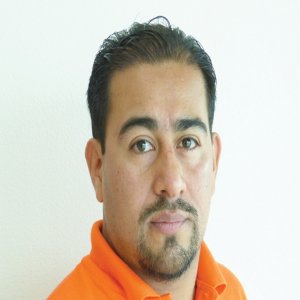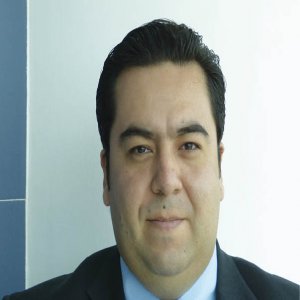Ecological Cement Solutions Prevent Wear and Tear

Ecological Cement Solutions Prevent Wear and Tear

STORY INLINE POST
Q: How have PowerCem’s portfolio and target markets evolved in Mexico over the last 17 years?
RM: We introduced an innovative technology called Zeolite Concrete, developed in the Netherlands to build dams, which offers numerous advantages for the construction of infrastructure from an economic, ecological, and durability perspective. In the beginning, we focused on roads, but we now consider this area to be fully developed. Our next step is to develop our applications for oil and gas, hydropower, and thermal power, in addition to our solutions for highly contaminated soils from mining activities. Nationally, we have performed a large number of projects and had contact with various government entities to spread the use of our technology.
EO: We essentially offer a range of products that can turn any soil into a waterproof monolithic concrete floor, using almost any aggregate, even pollutants. Our portfolio includes RoadCem, with applications for all types of floors and platforms; ConcreCem, designed to improve the resistance of hydraulic concrete or Portland cement; ImmoCem, which is effective for the immobilization of pollutants such as cyanide, ammonia, arsenic, lead, or copper; and finally, OilCem, which was created for oil drilling applications.
Q: What are the main applications of PowerCem’s technologies in the construction of oil and gas facilities?
EO: OilCem’s technology uses all drill cuttings produced from drilling operations as building material for the construction of access roads and drilling pads. This covers a vast amount of material that contains oils, sands, and clays. Even after an oil spill, it can transform all contaminated material into suitable materials for construction, because it encapsulates all contaminants at a molecular level. In addition, OilCem avoids the necessity to bring the coating material from natural reserves and the resulting damage to the environment. On top of that, our solution can reduce hauling of construction materials by 90% on a project. Seen from our perspective, we turn an ecological problem into an innovative solution.
RM: The main advantage is that our products prevent environmental degradation, reduce CO2 emissions and fuel use, and avoid the waste of natural resources. By using the site’s soil, even poor quality materials, our products do not erode, reducing the execution time of a project by close to a third. The durability of our products is much higher than conventional processes while they require less maintenance, which can have a significant impact on medium and long-term costs.
Our products are soil transformers formed by the mixture of organic materials and synthetic zeolites, which have the capacity to modify the hydration process of Portland cement. Due to their molecular structure, our products are waterproof, which reduces the thickness of pavements, balances the distribution of stresses and strains, and avoids cracking by having no expansion joints.
Q: What differentiates OilCem’s technology from the other solutions in your portfolio?
EO: The nanotechnology is the same in most of our solutions. The components of the formula for each product are similar, such as the reagents, but they differ depending on the aggregate that they react with. Almost 20 of these components are minerals that have been modified in nanotechnology laboratories. We extract natural zeolites, convert them into powder, and modify them at a molecular level with atomic force microscopes. The resulting reactive components are ready to be activated with their opposites. Therefore, our products do not modify the pollutants chemically, but encapsulate them at a molecular level, so they are no longer leaching. For OilCem, we have developed a technology that avoids the use of barite in the drilling process of a well. It withstands high temperatures and protects against crashes.
Q: What has been PowerCem’s involvement with PEMEX and other oil and gas services providers to date?
RM: We worked with PEMEX several years ago to build access roads in Poza Rica, Veracruz, which have not required any maintenance to date. We are now working on the construction of a pilot road section in Ciudad del Carmen, Campeche. We are also about to start soil construction, columns treatment, and water tanks repair at PEMEX’s refinery in Tula, Hidalgo. On the private side, we are building perimeter roadways in Coatzacoalcos at the Etileno XXI project for ICA Fluor, and working on the construction of temporary platforms for Odebretch within the same project. In the municipality of Ebano, San Luis Potosi, officially considered the birthplace of Mexican oil production, Powercem is about to sign a contract to build all the roads and platforms for DS Servicios Petroleros, the consortium that has the concession to exploit the oilfields.
Q: What are the advantages of OilCem’s applications for offshore drilling infrastructure?
EO: The advantage of all our products is their capacity to inhibit harmful reactions to the concrete. For example, seawater contains salts such as sulfates that destroy the concrete. Once the solution becomes more alkaline, the concrete structure is destroyed from the inside. All these detrimental reactions that can occur in concretes are inhibited by OilCem. By making concrete with salt, sand, and any kind of water, we eliminate the necessity to use potable water to make concrete.
RM: We can dredge material from the seabed and use it as concrete. This system was originally developed in the Netherlands, where people had to build concrete dams for land reclamation. In the beginning, they used to drain the water, dredge the seabed, and fill it with coating. But they noticed that concrete was easily deteriorated under these conditions and found a way of using the spare material from the seabed, adding it to the concrete. This is how ConcreCem and RoadCem appeared.
Q: What are the company’s plans to overcome the fierce competition in the concrete market?
EO: We provide an integral technology, and then give support and quality supervision. In all the projects in which we participate, an engineer from our company verifies that the work is done in conformity with the specifications of the project. We then provide our internal report to the client in which we specify the topography, dosages, thickness, and everything that happens at the workplace. We do not let any product out of our warehouse if we do not know what project is going to or if it is not verified or designed by us.
RM: PowerCem’s products are certified by UNESCO on the macro-economic effects of the use of our technology in road infrastructure in floodplains, as well as being certified by PROFEPA. We will soon have a plant in Celaya, Guanajuato, from where we plan to export our products across the Americas.






















